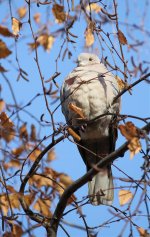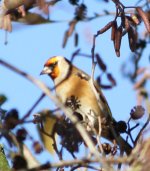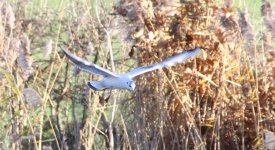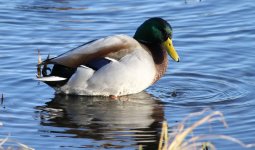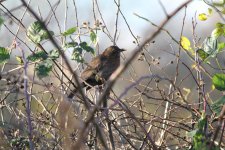Suzanne Walsh
Member
I have just upgraded from my old Fuji finepix bridge camera to a 7D. I debated doing this (got confused over that, so had a thread for that too lol) between another bridge, and a DSLR. However, after considering what I was told in my other thread I was cheeky and went to a local large change electricals shop to do some testing.
Being the control freak that I am I liked the control of the DSLR over the bridge camera a lot. The chap in the shop was great, and an actual photography enthusiast (has a 5Dmii and such), and was great with me. He said that an 18-55mm, and a 55-300mm lens would be fine for what I want.
As I explained in my other thread; I'm a fine detail portrait artist with a love of birds, and particularly want to try getting some BIF pics. I want sharp detail rich images (and I know my skill, or lack there of will play a big part in this too) if I can. The trouble is the following;
I have got a bundle of the camera, and three lenses. A Macro ef-s 18-55mm, ef-s 18-135mm, and a ef-s 55-250mm, all Canon. So am I right in thinking that I could not bother with the 18-135, and just use the other two? Also, instead of buying the ef 55-300mm lens said chappy told me about, I could just stick to the 55-250, and then use the money to go towards a 100-400mm lens?
Speaking of the 400mm.....I'm getting impression from reading threads that there are two different ones that people take about, though both made by Canon. I see 100-400mm and 400 f5.6 (which I thought were the same) talked of as though they are two different lenses. I can't seem to find a guide that simplistically tells me what each lens is, what difference EF and EF-S is, and what each lens is for regarding the mm measurement, and then the f+#.
I don't want tons of lenses to carry around with me. Just one for close to mid range, and one for distance good for BIF.
Sorry to have waffled on. Any thoughts appreciated.
Suzanne
Being the control freak that I am I liked the control of the DSLR over the bridge camera a lot. The chap in the shop was great, and an actual photography enthusiast (has a 5Dmii and such), and was great with me. He said that an 18-55mm, and a 55-300mm lens would be fine for what I want.
As I explained in my other thread; I'm a fine detail portrait artist with a love of birds, and particularly want to try getting some BIF pics. I want sharp detail rich images (and I know my skill, or lack there of will play a big part in this too) if I can. The trouble is the following;
I have got a bundle of the camera, and three lenses. A Macro ef-s 18-55mm, ef-s 18-135mm, and a ef-s 55-250mm, all Canon. So am I right in thinking that I could not bother with the 18-135, and just use the other two? Also, instead of buying the ef 55-300mm lens said chappy told me about, I could just stick to the 55-250, and then use the money to go towards a 100-400mm lens?
Speaking of the 400mm.....I'm getting impression from reading threads that there are two different ones that people take about, though both made by Canon. I see 100-400mm and 400 f5.6 (which I thought were the same) talked of as though they are two different lenses. I can't seem to find a guide that simplistically tells me what each lens is, what difference EF and EF-S is, and what each lens is for regarding the mm measurement, and then the f+#.
I don't want tons of lenses to carry around with me. Just one for close to mid range, and one for distance good for BIF.
Sorry to have waffled on. Any thoughts appreciated.
Suzanne





